- Alphons Diepenbrock (1862-1921) and Elsa Diepenbrock (1868-1939) lived here since 1901. Diepenbrock paid 36.50 guilders per month at that time.
- Johannes Verhulststraat 89, Amsterdam, the Netherlands.
- They had already rented the house during the construction phase. The street side bordered with meadows. Fons was on the second floor of the upstairs apartment because it is further away from the street noises. the view from the covered terrace reached the Zuidergasfabriek.
- Close to the Amsterdam Royal Concertgebouw (6 minutes, 450 meter).
- Visited by Gustav Mahler (1860-1911), Willem Mengelberg (1871-1951) and Edvard Grieg (1843-1907). Bernard Zweers (Zweers was not impressed by Mahler’s music, as a result of which the holding was lessened), Aaltje Noordewier-Reddingius (1868-1949). Arnold Schoenberg (1874-1951), Alban Berg (1885-1935), Anton Webern (1883-1945), Richard Strauss (1864-1949).
- See also Gustav Mahler himself in the Netherlands (1903, 1904, 1906, 1909 and 1910)
Layout
- Diepenbrock: Level 5 (Since 1941 on the roof): Castellinarium. Small concert hall.
- Diepenbrock: Level 4 (Kapverdieping) Under the roof floor: Study Alphons Diepenbrock (1862-1921) with Erard. Study with view over the meadows (on the backside of the house). Bedroom Alphons Diepenbrock (1862-1921). The De Lairessestraat was was not built yet in 1911.
- Diepenbrock: Level 3 (Verdieping) Floor: Living room. Elsa Diepenbrock (1868-1939). Bedroom Elsa Diepenbrock (1868-1939) on the street side.
- Other family: Level 2 (Belle etage) Chief floor.
- Other family: Level 1 (Begane grond) Ground floor.
There is a small ornament right next to the stairwell: this is the mouthpiece, the Sprechrohr, with which maid Koosje spoke to the one who was outside. Through this tube the voices of Gustav Mahler, Matthijs Vermeulen (1888-1967), Willem Mengelberg and many others sounded. After Koosje had asked who was present, she called the composer or she received a letter or score. Koosje herself spent her working life in the service of the Diepenbrocks in a small attic room.
Map
House Diepenbrock, Johannes Verhulststraat 89, Amsterdam, the Netherlands. Map. Close to the Amsterdam Royal Concertgebouw (6 minutes, 450 meter).
Later
- The next day (10-03-1914) Diepenbrock was at the rehearsal of the Fünf Orchesterstücke. In the afternoon Arnold Schoenberg (1874-1951) payed Diepenbrock a visit a this house in the Verhulststraat(House Diepenbrock), and left Anton Webern (1883-1945) and Alban Berg (1885-1935) to wait outside in the pouring rain as they were but students at the time! In an in memoriam article after Schoenberg’s death, which appeared in De Groene Amsterdammer of 08-09-1921, the composer Matthijs Vermeulen (1888-1967) remembers:
”When I went to visit Diepenbrock […] I met at his door two young men shorter and darker, both of them probably 25 years old in a rather akward position. In the hall near the staircase Schoenberg walked by and I, a newcomer myself, and having no right to his attention, saluted him. Upstairs, in his working room, Diepenbrock reached me his hand and asked me, both satirical and emotional: Did you see him, the master and his pupils? Then I heard that the two young men that I had met as an outsider at the entrance already had their legend. They followed their master everywhere. But not being inaugurated themselves, they had to stay outside when masters met each other. To Schoenberg this was a matter of course and to them it was just their duty to pay such a respect…”
- In 1936 (after Alphons’ death) his wife, Elsa Diepenbrock (1868-1939), had the Castellinarium built for her musical daughters. In the hall concerts and lectures were given for 50 people. Not only Diepenbrock’s daughters performed their music, but also composers such as Francis Poulenc, Marius Flothuis and Hendrik Andriessen. It was built by the Amsterdam architect Philip Warners who is known as one of the designers of the Amsterdam School. Because the castle is so high, Warners decided to build it in trapezoid form. Thanks to this streamlining it was less sensitive to the wind. “My mother sometimes said”, says Florian Diepenbrock, “that the castle could shake dangerously in the event of a storm, as if it were a ship on a turbulent sea.” On the slammed flap of the wing is the guest book from the war. The first concert that was given clandestinely was on 30-12-1941, and it was only in the hunger winter of 1944 that the last performance occurred. From that moment on it became too dangerous. On the opening program Die schöne Müllerin by Schubert was accompanied by aunt Thea Diepenbrock and Bertus van Lier as a singer. Florian Diepenbrock still surprises that everyone frankly and freely wrote his or her name in the book, at the beginning of the war with fountain pen, then with pencil. Among the guests were many Jewish people in hiding. They brought money, a handful of potatoes, bread or some vegetables, which they could not afford. Artists who did not join the Kultuurkamer were denied a ban and therefore missed income, including the daughters Diepenbrock. The benefits due to the concert and stage nights brought the worst need. The Castellinarium offered place to about 150 visitors; it was nine meters long and five meters wide. A door in front of the Castellinarium gives access to the roof. This was the escape route for the visitors of the secret art nights.
- 2017-2018: The house Johannes Verhulststraat 89 has a rich history. It has been inhabited for 116 years by the Diepenbrock family – composer Alphons Diepenbrock (1862-1921) lived there since 1901 until his death in 1921. At the establishment and the house almost nothing had changed all that time. The current owner has decided to renovate the entire building. Meanwhile, the house is empty. The antique cabinets were taken out through the window with a large crane. Five generations Diepenbrock have lived at number 89. Great-grandson Elja Diepenbrock (43) grew up: “Since Alphons Diepenbrock came to live here, the family rented the property, and three years ago the owner changed his own considerations to renovate it.” With the renovation also disappears the Castellinarium, the small wooden concert hall on the fourth floor.
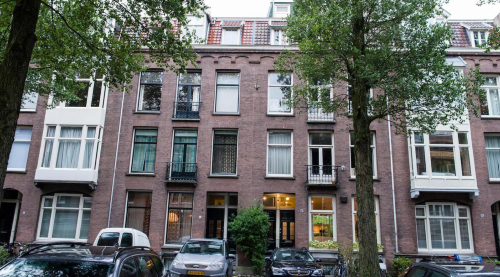
2017. Amsterdam. House Diepenbrock. With Castillinarium (since 1936).
2017. Amsterdam. House Diepenbrock.
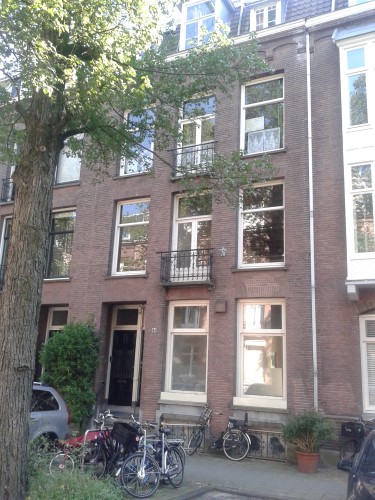
2017. Amsterdam. House Diepenbrock.
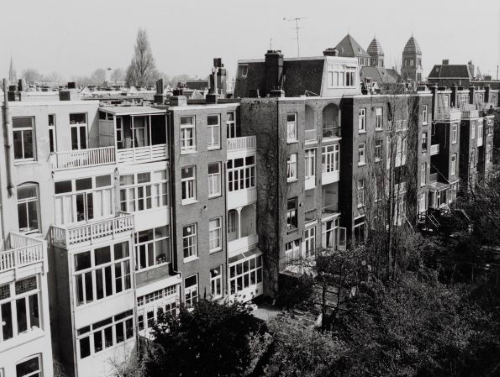
Amsterdam. House Diepenbrock. Back side; with Castellinarium.
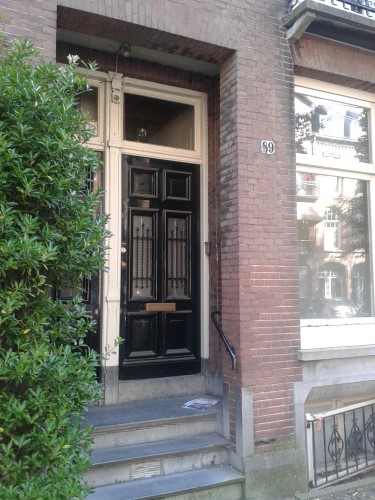
2017. Amsterdam. House Diepenbrock.
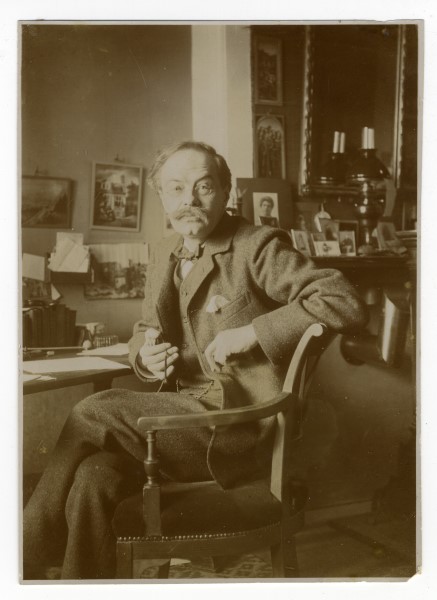
Year 1909. Alphons Diepenbrock (1862-1921) at House Diepenbrock.
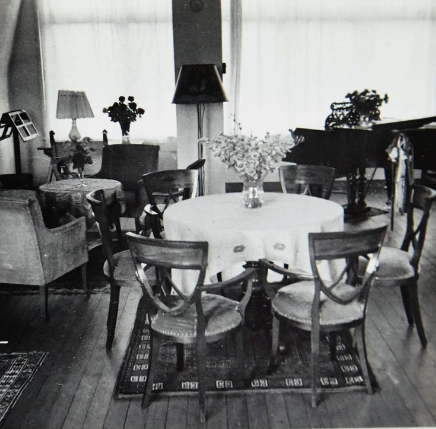
Amsterdam. House Diepenbrock. Living room.
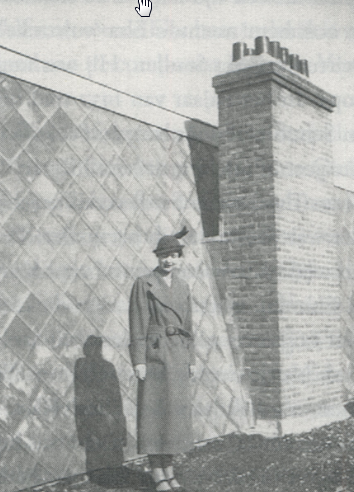
Thea Diepenbrock (1907-1995) on the roof of House Diepenbrock in front of the Castillinarium.
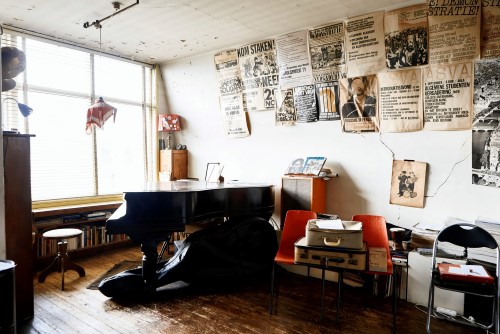
Amsterdam. House Diepenbrock. Castillinarium interior.
